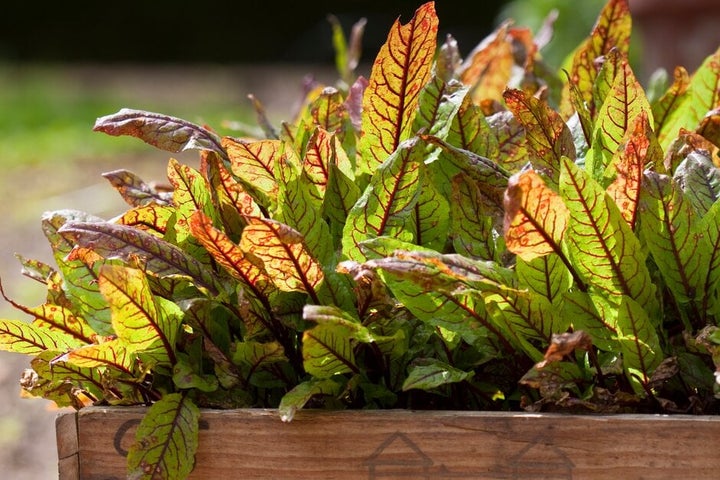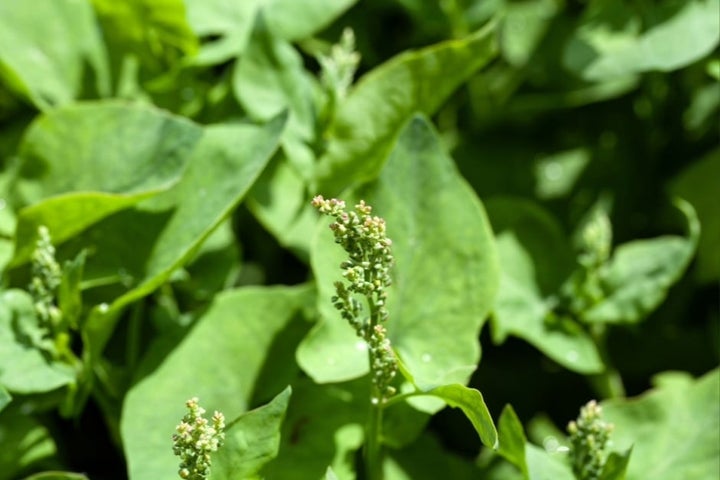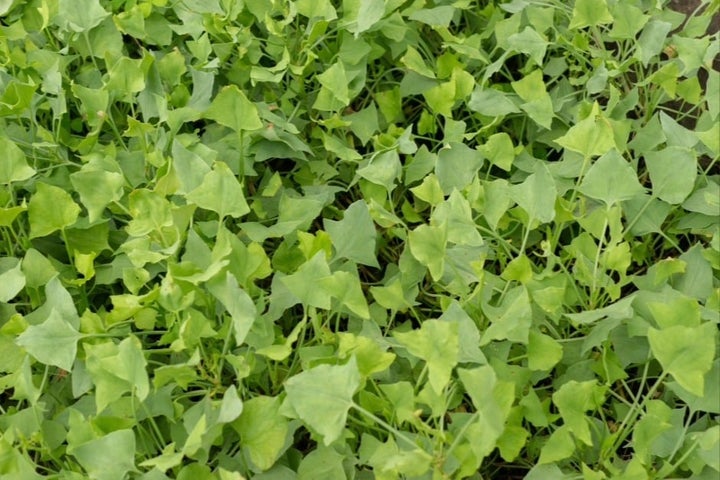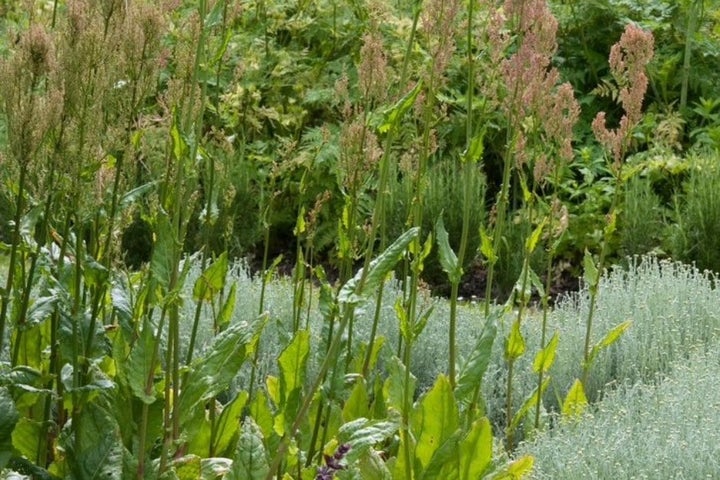Getting Started
Sorrel is an easy-to-grow , harvested from spring to autumn. The leaves add a refreshing, citrusy tang to salads, soups, sauces and many other dishes.

Sorrel can be grown for cut-and-come-again baby leaves in a herb garden, veg patch or container. Just a few leaves added to a mixed salad provide a sour but crisp flavour. Young sorrel leaves can also be cooked and used like spinach. Sorrel is best harvested regularly to encourage a steady supply of fresh young leaves. Older leaves can become tough and bitter.
Sorrel is happy in sun or partial shade, and tolerates most soil types. Plants should live for many years, dying back over winter then re-sprouting from the ground in spring.
Jobs to do now
Remove dead leaves
Month by Month
Sow
Plant
Harvest
Choosing What To Grow
There are three species of sorrel often grown for their tangy edible leaves. They differ in appearance and the leaves taste slightly different, but all are hardy throughout the UK.
French sorrel or buckler-leaf sorrel (Rumex scutatus) has grey-green, juicy, citrus-flavoured leaves, ideal for adding to salads. It has a low-growing, mat-forming habit, growing 15–45cm (6–18in) tall and spreading to about 1m (3ft). The leaves are shield-shaped, with tips that can be pointed or rounded. The variety ‘Silver Shield’ has attractive silvery-green leaves.
Common sorrel (R. acetosa) is a UK , forming clumps of leaves with a sour, slightly astringent lemony flavour. It has an upright habit, with green leafy growth reaching about 50cm (20in) tall and wide. Its flower spikes can reach over 1m (3½ft) tall – they look similar to dock flowers (a close relative) and can also self-seed liberally.
Red-veined sorrel,a variation of the wood dock R. sanguineus, has leaves with a sharp flavour that are also very decorative. The of green leaves have dark red veins and stems. Clumps generally grow to 40–60cm (16–24in) tall and about 30cm (12in) wide.
Native sheep's sorrel (R. acetosella) is also edible, but not generally grown as a garden herb, although it's sometimes used as foraged wild leaves. Several species of Oxalis are also commonly known as sorrel, but are usually grown as ornamental plants or wildflowers.
For inspiration on growing all kinds of herbs, visit the RHS gardens – you'll find herb collections and veg plots full of tasty and aromatic herbs and salad leaves.
What & where to buy
Seeds and young plants of the three sorrels listed above are sold by garden centres and online retailers. Young plants are mainly available in spring and summer. Two or three plants are usually sufficient for most needs, as the leaves are only used sparingly. However, you might choose to grow larger numbers of red-veined sorrel for its ornamental qualities.
Recommended Varieties


Red-veined sorrel
Variations of Rumex sanguineus. Decorative leaves with a strong flavour.

Common sorrel
Rumex acetosa – native culinary sorrel, its leaves have a sour, lemony flavour.
Preparing The Ground
Choose a site in full sun or partial shade. Sorrel grows well in fertile, moisture-retentive soil. Before planting or sowing sorrel, weed the ground thoroughly then fork it over to break up any hard lumps. If you have poor or very free-draining soil, mix in some well-rotted organic matter. If sowing directly into the ground, remove any stones and rake the soil until it has a fine, crumbly texture. Alternatively, if you’re practising no-dig, the surface with well-rotted organic matter and sow or plant directly into the mulch.
Sowing

French, common and red-veined sorrel are all easy to grow from seed, sown either indoors or outside. Sorrel also self-seeds readily if you let it flower and set seed.
Sowing indoors
In spring, fill or small pots with moist, peat-free and sow seeds about 1cm (½in) deep. Place in a warm, bright location such as a windowsill or in a . should take one to two weeks at temperatures around 15°C (59°F).
When the have several leaves, move each one into an individual pot about 7.5cm (3in) in size. Keep them somewhere warm and bright, and water regularly. The young plants can be outside in late spring or early summer (see Planting below).
Sowing outdoors
Sow sorrel seeds outside from mid-spring to early summer, in a short 1cm (½in) deep. They can also be sown in containers filled with peat-free mixed with fine peat-free multi-purpose . Sow seeds sparingly, as a few plants are usually sufficient. Water in dry weather and thin to 20–30cm (8–12in) apart if necessary.
Planting

Young sorrel plants – either grown from seed or bought in pots – can be planted outside from spring to early summer. Harden off indoor-raised plants first to acclimatise them to outdoor conditions. Although sorrel will tolerate most soil types, you'll get a better crop of leaves growing it in rich, moisture-retentive soil (see Preparing the Ground above).
Sorrel will grow well in full sun or partial shade. Position the plants at the same level they were previously growing, and space them 20–30cm (8–12in) apart. French sorrel can have a much wider spacing if you're happy to have gaps between plants for the first few years. Firm them in, then water well.
You can grow sorrel in containers, which is useful if you have limited ground space and don't want sorrel to spread in borders. Plant in a container at least 30cm (12in) wide and 20cm (8in) deep, filled with a 50:50 mix of peat-free soil-based and peat-free multi-purpose .
Plant Care
Once established, sorrel generally needs little maintenance. Simply snip out any flower stems to keep plants producing fresh leaves and to prevent self-seeding if you don’t want more plants. plants annually and dividing them every four or five years will help keep them productive.

Watering
Water and newly planted sorrel during dry spells until well rooted. growing in the ground shouldn't need any additional watering – except during exceptionally prolonged dry spells.
Plants in containers need particular attention, as the can dry out quickly in warm weather, so check the compost regularly and aim to keep it evenly moist. Move containers into a shaded spot during hot, sunny spells, to reduce the need for watering. Make sure plants in containers don’t get over winter though, as the roots may rot – move them to a sheltered spot, such as near a building in a rain shadow.
Propagating
Divide established sorrel plants every four or five years in spring or autumn to rejuvenate congested clumps and ensure plants stay productive. Sorrel will readily self-sow if you let it flower and produce seeds, or you can collect and sow them where you want them to grow.
Mulching
In late winter or early spring, apply a of well-rotted organic matter, such as garden compost, around clumps of sorrel growing in the ground. will improve your soil, help to retain moisture and suppress weeds.
Harvesting
Young sorrel leaves can be harvested from when new growth starts in spring right through into autumn. Regular picking encourages plants to produce young, tender leaves. Add them to mixed salads and sandwiches, and scatter chopped leaves over various cooked dishes. They can also be steamed like spinach. If the leaves get too old and bitter, simply remove them to encourage new growth.
Problem Solving
Once settled in, sorrel is usually robust and healthy. and young leaves may need to be protected from slugs and snails. Soft new growth may also attract aphids, although treatment is rarely necessary.
Common Problems

Slugs and snails
Slugs and snails are common garden animals, and they are well suited to the damp, mild climate of the UK. A few species feed on garden plants, but mos...



